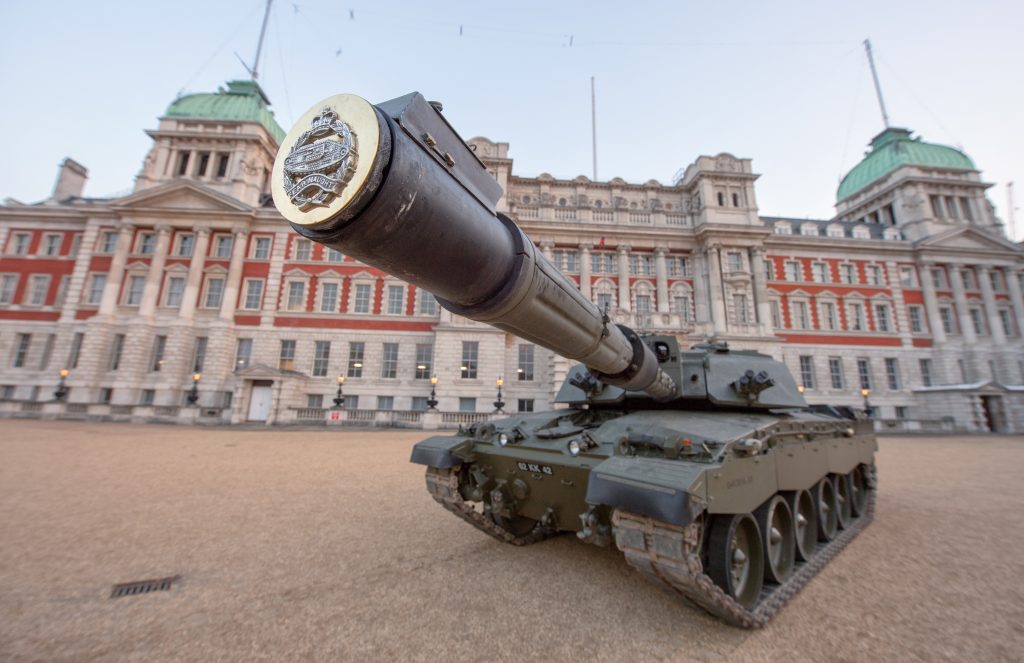In late November the Royal Tank Regiment will mark 100 years since the first large scale tank action with special events taking place in London and Cambrai in Northern France. The Battle of Cambrai in 1917 changed the history of warfare forever with the first large-scale use of tanks in battle.
The Royal Tank Regiment, started out as a top secret band of trades from all walks of life, who were brought together in the Tank Corps to break the stalemate of trench warfare. They soon evolved into a unit which revolutionised combat and has deployed on all major conflicts over the last 100 years.
To mark 100 years since the battle, the Royal Tank Regiment, distinctive by their black berets, belts, boots and coveralls will hold the following commemorative events:
- Sunday 19th November : London – March to the Cenotaph (including a Mk IV replica First World War tank).
- Friday 24th November: France – Traditional Drumhead Service, CWGC Louverval.
- Saturday 25th November: France – Cambrai Town War Memorial Ceremony and D51 “Deborah” Museum Opening
- Sunday 26th November: France – Freedom of Cambrai Parade
Commenting on the commemoration plans, The Chief of the General Staff, Sir Nicholas Carter said: “The Battle of Cambrai marked a significant moment in the evolution of armoured warfare and The Royal Tank Regiment are rightly proud of what they achieved in the battle 100 years ago. The tactics and technology employed at Cambrai were in many ways the proving ground for the hugely successful integration of infantry, armour, artillery and air power that led to the decisive combined arms manoeuvre in the last 100 days of the war in 1918. Just as they did 100 years ago, the tanks of the British Army remain a vital capability on today’s battlefields.”

Commanding Officer, Lieutenant Colonel, Simon Ridgway said: “The Battle of Cambrai is of tremendous importance to the Regiment and every year we take the opportunity to commemorate the courage and sacrifice of the world’s first tank crews. The qualities shown by these men – their daring, innovation and willingness to attempt what had never been tried before – remain at the core of the Royal Tank Regiment and its soldiers. The Regiment is fiercely proud of its status as the oldest tank unit in the world and continues to adapt to meet the challenges we face today.”
Curator of the Tank Museum, Bovington, David Willey said: “The Battle of Cambrai was not only the first successful use of tanks in a mass attack. It proved their worth and saved the fledgling Tank Corps which until Cambrai – had not had a chance to really show their capabilities. The Tank Regiment rightly commemorates and celebrate the achievement of their predecessors.”
The Royal Tank Regiment commemorates the anniversary of the battle annually on Cambrai Day (20th November). It is the most important day in the Regimental calendar, and is commemorated wherever its troops find themselves, from the battlefields of the Second World War, to the deserts of Afghanistan, to their current barracks in Tidworth, Wiltshire.
The Battle of Cambrai took place between 20 November and 6 December 1917. It was the first time that tanks had been used in significant numbers, with over 450 deployed. The battle is also widely recognised as the first time that UK and US soldiers fought and died together in conflict, as US Army engineers were attached to support the British attack.
The attack was initially successful, breaching what the British called the ‘Hindenburg Line’. For the first time in years, bells across the UK including St Paul’s Cathedral rang out to greet the news of a great British victory. The advances showed that even the strongest trench defences could be overcome by a combination of new tactics and equipment.
The Germans however successfully counter-attacked and drove back much of the allied advances. Eventually the offensive was halted, at a cost of 44,000 British and Commonwealth and 41,000 German casualties. However the Tanks had made their mark, and would prove decisive in the Allied victory of 1918.